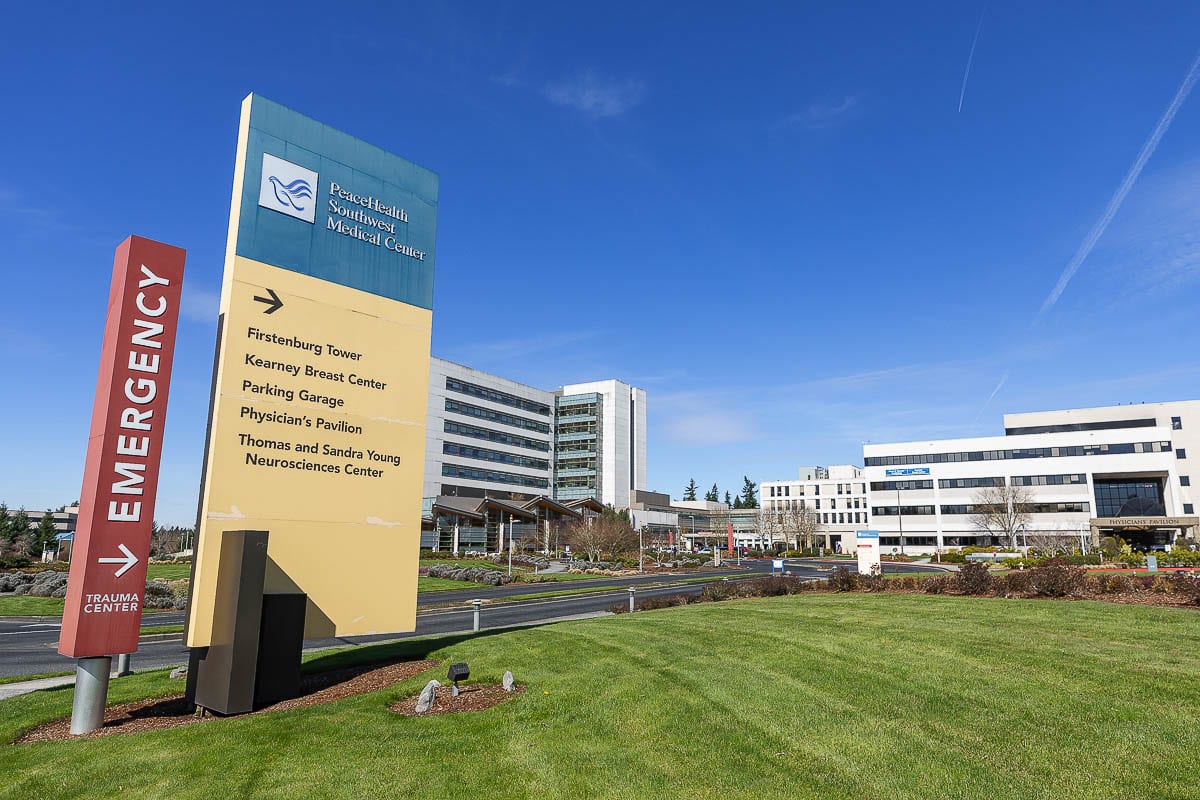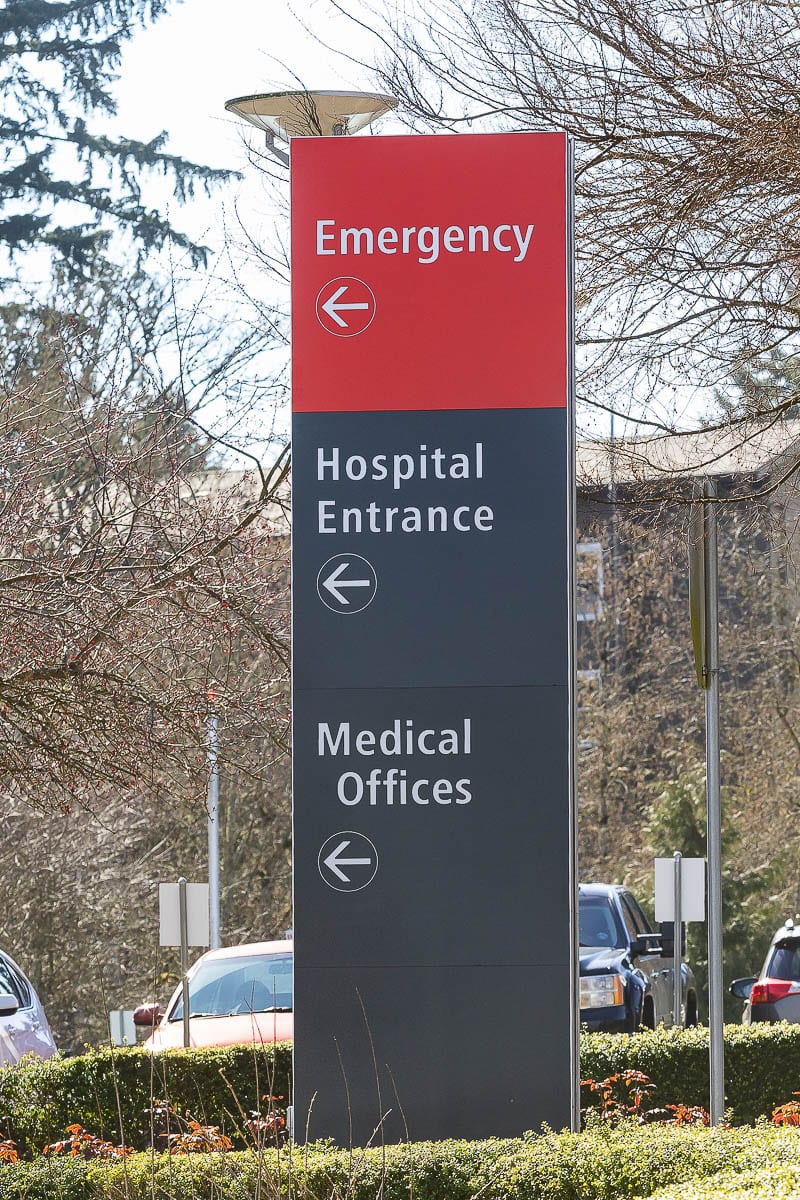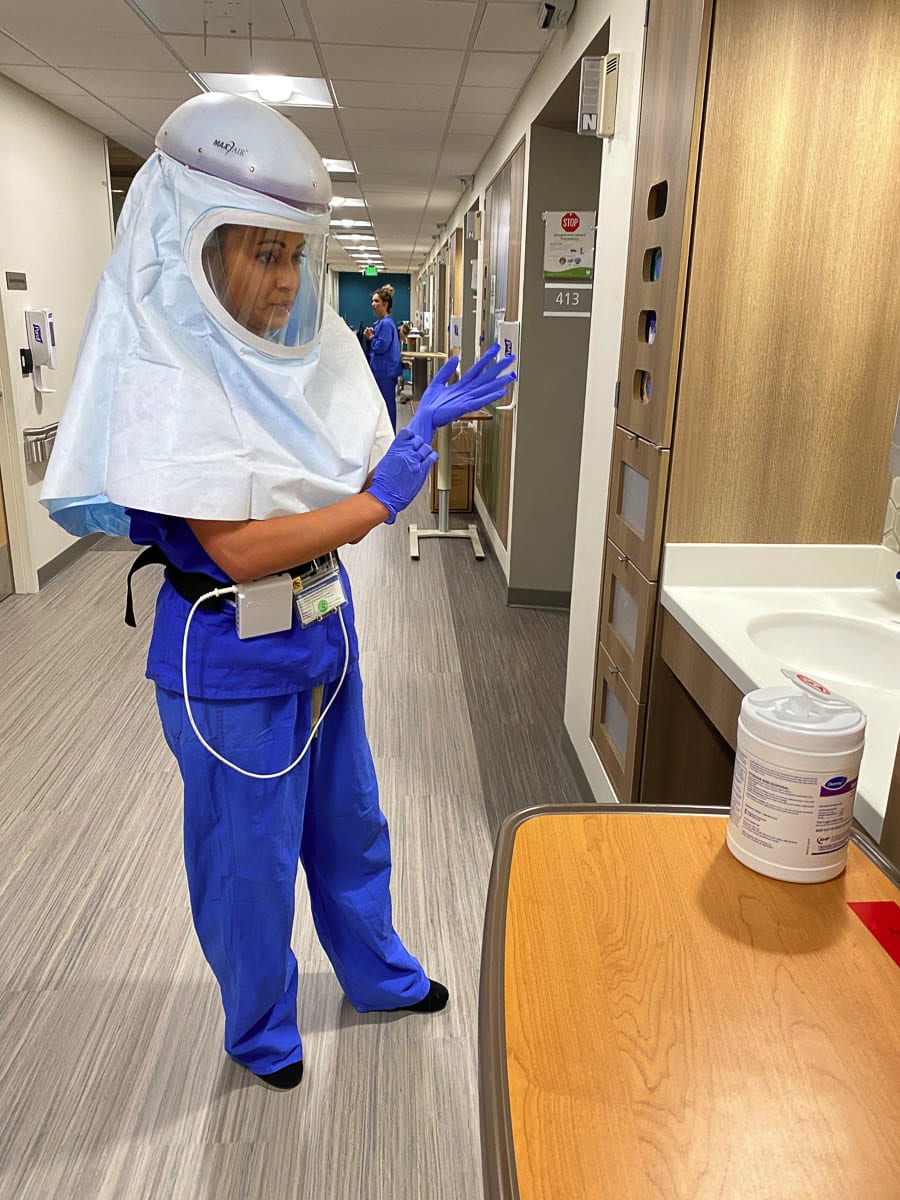Better supplied, and equipped with more medical knowledge, healthcare providers face a new storm with greater confidence
CLARK COUNTY — Hospitals in and around Clark County are bracing for a potential influx of COVID-19 patients, even as the annual flu season approaches.
The potential double-whammy has hospitals planning to add new staffing, and making contingency plans for if and when doctors on the frontlines are exposed to a virus that has become the third-leading cause of death in the United States this year, trailing only heart disease and cancer.

On Thursday, Clark County Public Health added 68 new positive COVID-19 tests to the total, bringing the daily average since last Friday to 54. That’s up from 45 cases per day, on average, for the previous week.
“We are seeing our positive tests per week, which is one of the many measures that we look at to see if it’s getting better or worse, has been rising pretty steadily over the last several weeks,” said Lawrence Neville, MD, chief medical officer for PeaceHealth Columbia Network, which includes PeaceHealth Southwest Medical Center in Vancouver and the PeaceHealth hospital in Longview.

According to the Washington Department of Health, positive test rates hit 7.2 percent between Oct. 12-18, and have been rising steadily since then. One possible quirk is that DOH listed a total of 623 tests conducted in Clark County during that period. If that’s true, it would represent a remarkable decline in overall testing, since Clark County Public Health reported 4,835 total tests for Sept. 6-12, the most recent week available on their website.
Even so, other metrics show that Clark County, and the region in general, are experiencing a potentially alarming increase in COVID-19 activity as the fall and winter holiday season sets in.
“Our inpatient census (of) how many COVID-19 patients we have in the hospital has risen essentially to the peak that it was earlier on in the pandemic,” Neville said during a Zoom interview on Thursday. “We reached a low point in early July. And we were all hoping that we would stay at that low point.”
John McCreary, MD, clinical vice president of medical affairs for Legacy Health, says they haven’t quite seen the same trend.

“We started to see an uptick after the reopening, and we had a little peak there in the Summer,” McCreary says, “since then, the numbers have trended in the same range for the last couple of months, despite the increase in the community prevalence in Oregon and Washington.”
Both doctors say their respective hospital systems are much better situated this time around to weather a potential surge in cases, both from a staffing and supplies standpoint, as well as a medical one.
“The supply chains are still not fully online,” says Dr. McCreary, “but I think most hospitals and health systems and clinics have been able to procure the higher level PPE that they need, and have a reasonable stockpile of that at this point.”
Neville agrees, saying the mood among the frontline workers is much better now than in the early days of the pandemic, even with the prospect of an influx of new cases.
“Providing them the right type of PPE at the right time is the new love language,” he says. “And the extent to which we as PeaceHealth are able to do that, our folks feel protected, and they feel safe.”
PeaceHealth currently has 16 beds set aside for COVID-19 patients, with seven ICU beds for those who need more urgent care. The healthcare system is also working to increase staffing, and Neville says they are capable of ramping up bed space as necessary.
As of Thursday, Public Health says there are 36 people in Clark County hospitals, 27 with a confirmed case of COVID-19, and nine more awaiting test results. That represents 5.7 percent of overall bed space, a rate that has remained relatively stable even as community-wide cases rise.

Both hospital systems also agree that nationwide trends have seen mortality rates from COVID-19 plummeting since the early stages of the pandemic.
“The patients that are admitted tend to have a slightly lower acuity and slightly shorter length of stay,” says McCreary. “They’re not as sick as they were early in the pandemic.”
Research is ongoing, but at least one study looking at mortality rates of a second surge in the Houston area found deaths among patients had declined by over 7 percent. Another survey of 5,000 patients at New York University’s Langone Health system found mortality rates had declined from 25.6 percent in March to 7.6 percent last August.
Still, medical experts warn that even the lowest likely mortality rate of COVID-19, which is estimated to be between 0.5 and 1 percent, is still five to ten times higher than the common flu.
While it would be easy to assume that death rates have fallen primarily because younger people are now the most likely to become infected, and the least likely to die from COVID-19, studies have shown that even older Americans are now much more likely to survive the disease.
Dr. Neville says some of that is likely due to better understanding among medical professionals on how to fight the virus.
While medical research into a list of drugs used to fight COVID-19 remains ongoing, several medications have proven to be useful.
Among the most useful is a high grade steroid known as Dexamethasone, a steroidal medication which has been shown to prevent an overreaction of the body’s immune system known as a cytokine storm, often blamed for much of the damage from the disease.
“Dexamethasone is a way to calm it down and bring it back into alignment,” says Neville, “and help people do better in the end.”

Neville says their doctors have also been using the controversial antiviral drug Remdesivir since the start of the pandemic. While it isn’t generally thought to greatly reduce mortality rates in seriously ill patients, it does seem to help people with a mild case who are having difficulty getting enough oxygen.
“The data suggests that it shortens the hospital course,” said Neville, “so that if you would have been sick for ten days, you’re sick for five days, for example.”
Another emerging treatment has been convalescent plasma, obtained through a blood donation by someone who has previously had COVID-19 and recovered.
“The data for this is still an evolution,” admits Neville, “but we know how to do this very safely, and a lot of our patients do get that as well.”
Doctors have also begun “proning” patients, a practice of flipping them onto their stomach when they’re having difficulty breathing, and then putting them on oxygen.
“It oxygenates the blood and the lungs better,” says Neville. “We do it even before we have to put a ventilator on someone, and they do really well with it.”
McCreary says ventilators are still necessary in some cases, but doctors have found that using them should be the absolute last option for critically ill patients.
“We’ve always tried to avoid intubation as much as possible,” says McCreary. “Early in the COVID pandemic, it was recognized that patients who went on a ventilator did more poorly than those who were able to avoid it.”
Flu season presents challenges
While hospitals remain confident they can handle at least a short-term surge in COVID-19 cases, the impending flu season presents a potential double-whammy for doctors and nurses on the frontlines.
That’s not necessarily because it’s expected that this year’s flu virus will be any worse than usual, though medical experts warn you can catch both flu and COVID-19 at the same time.
The more immediate concern for hospitals is due to the fact both viruses share many symptoms of the same symptoms, including fever, cough, and shortness of breath.
All of that means emergency departments will need to treat anyone with those symptoms as a possible COVID-19 case, until a test can be done.
That requires more use of protective equipment, isolation rooms, and testing kits.
“And all of those extra requirements will stay in place for anywhere from 24 to 48 hours,” adds Neville, “until we totally know what you have. So to the extent that people can avoid the flu, when they do come to the hospital, that would decrease the use of those scarce resources.”
Neville says they have seen demand for flu shots much higher than usual, which shows much of the community appears to be getting the message. It’s also hoped that increased use of masks and physical distancing could also help to reduce the severity of the flu season.
In numbers released on Thursday, Clark County Public Health said their flu season tracking shows levels remain well below normal for this time of the year, though last year’s flu season also arrived somewhat late.
Legacy Health Systems is offering a series of free flu shot clinics in Clark County starting next week, open to anyone above six months old, regardless of health insurance status.
Those clinics will be from 1 p.m. – 7 p.m., Nov. 3 and 10, at Legacy Salmon Creek Medical Center main lobby, located at 2211 NE 139th Street in Vancouver. Another will be on Nov. 6 at the Legacy Medical Group Family Wellness Clinic on SE Tech Center Drive from 1 p.m. – 7 p.m.




